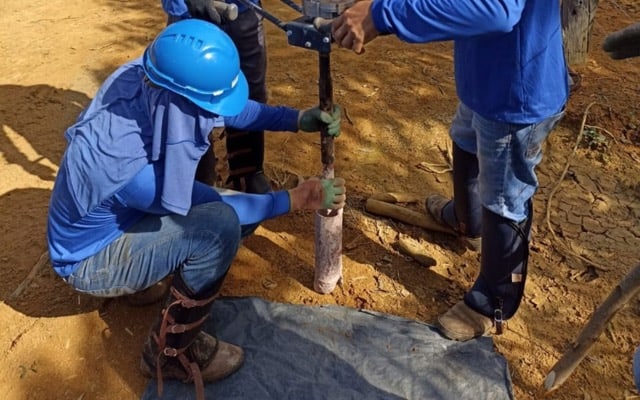South America focused BBX Minerals (ASX: BBX) has moved quickly to build on its Brazilian rare earths portfolio following its recent exploration success there.
The company has signed a purchase agreement to acquire exploration permits over two new tenements within the Apui region in Brazil, covering an area of 189 sq km.
The purchase comes just weeks after the company reported it had identified 14 new high potential ionic rare earths (iREE) targets in the Ema and Ema East leases in Brazil.
It also follows the company’s promising results from multi- element assays evaluating the rare earth element (REE) potential in the Apuí region.
Building a significant portfolio
The company’s two new tenements are a strategic add on to three exploration permits the company has submitted for within the Apuí region in the state of Amazonas, Brazil.
BBX believes it has identified a unique sedimentary unit which shares the same ternary radiometric signature, and geological, climatic, and topographic characteristics with Ionic Rare Earth’s (ASX: IXR) Makuutu iREE project in Uganda.
That theory was boosted with the significant recent REE results it obtained from the Ema project.
The Apui project now encompasses an extension of approximately 35 km.
The company says its plans to boost its Apui position is supported by its in-country exploration and operational experience, as well as its strong long-term relationship with key stakeholders in the region.
Chief executive officer, Andre Douchane, said BBX’s Board felt it was prudent to undertake a plan of acquiring low cost, strategic exploration concurrently with the development activities related to its flagship Três Estados project.
“With the addition of these two new tenements, the regional exploration potential increases significantly. Although we are eager to commence drilling, it is crucial for us to exercise patience and wait for the formal transfer of the licences to BBX. Meanwhile, the team is currently diligently working on the Ema discovery, where there will be a continuous stream of auger samples sent to SGS for analysis,” Mr Douchane said.
“Testing is ongoing at Ecobiome, where we are currently awaiting assays and nearing the conclusion of the second pilot plant test on Tres Estados drill hole TED 020. The pilot plant test on TED 020 commenced on Monday, June 5th, and will conclude on Wednesday, June 14th, nearly doubling the duration compared to the first test on an Ema drill sample.”
Mr Douchane said that while BBX has yet to obtain all the assay results for the Ema test it was observed that the recovery curve was still ascending in its testwork.
New Ema drilling program
Mr Douchane confirmed the company has commenced an REE auger drilling campaign at the Ema project.
The new program is following up BBX’s recent discovery of 14 high-priority REE targets in the area.
The company has sent two drilling teams to Ema for the auger drilling work, where an initial hole has already reached a depth of 20 metres within altered felsic volcanic rocks.
BBX has initially identified reddish oxidation and grey clays containing kaolin in the first two metres and is preparing to send samples for assaying.
The current exploration program is focused on two distinct REE projects at Ema/Ema East and Apui.
It is examining these near-surface deposits to ascertain whether ionic adsorbed REEs are in place.
Its strategy is focused on completing relatively fast drilling and development processes in these shallow targets, providing for low capital expenditure and operating costs and straightforward metallurgical processes.
Strategic plans in place
The company has plans to undertake similar exploration strategies as both prospects, kicking off with the obtaining of soil samples in the five new leases in the Apui project and intensive auger drilling at Ema/Ema East.
Aimed at identifying the key mineralised zone, the results will be used in producing a mineral resource estimate.
The company has plans to ramp up activities to four auger drilling teams by the end of July.
Brazilian rare earths potential
Brazil has been estimated to hold the third largest rare earth reserves in the world at a conservative 21 million tonnes of rare-earth oxide (REO).
However, while the South American country may own one of the largest reserves of rare earths on the planet it has initially failed to attract much exploration and production investment.
In 2022, production of rare earths in Brazil was estimated at approximately 80 metric tons of rare-earth oxide equivalent, down from 500 tons a year earlier.
However, the recent discovery of ionic adsorption clay rare earths has led to an upsurge in exploration interest.
